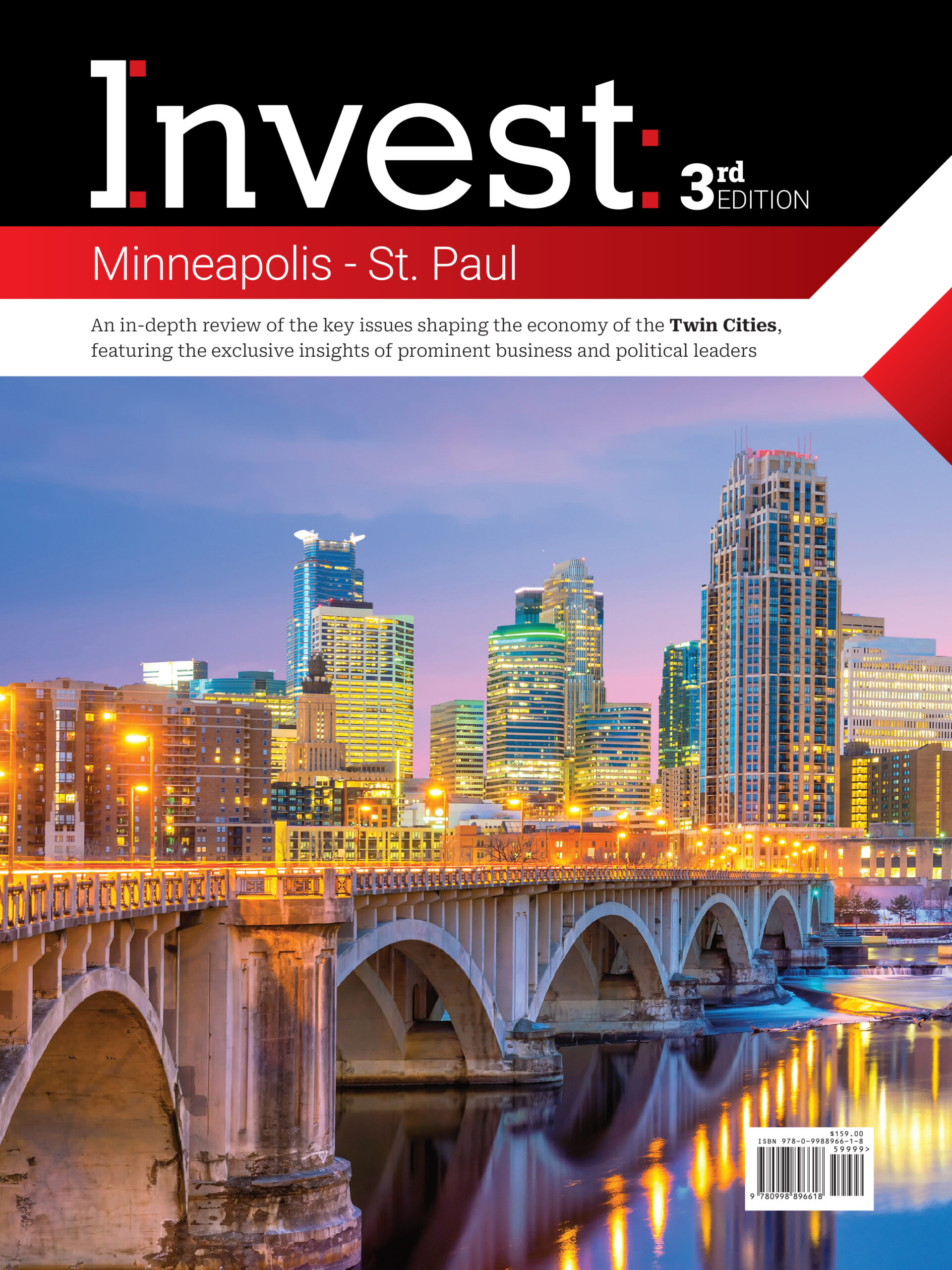Spotlight On: Robert Gottlich, EVP & DFW Regional President, Happy State Bank
 November 2023 — Robert Gottlich, EVP and DFW regional president at Happy State Bank, talked to Invest: about the advantages that merging with Centennial Bank brought to its lending ability and workforce. He also talked about the state of the banking sector in North Texas. “Growth is everywhere in the general economy of North Texas,” he said. “The best fit of Happy State Bank in this situation is to facilitate the growth and success of the markets by serving the small business community.”
November 2023 — Robert Gottlich, EVP and DFW regional president at Happy State Bank, talked to Invest: about the advantages that merging with Centennial Bank brought to its lending ability and workforce. He also talked about the state of the banking sector in North Texas. “Growth is everywhere in the general economy of North Texas,” he said. “The best fit of Happy State Bank in this situation is to facilitate the growth and success of the markets by serving the small business community.”
What factors made the merger with Centennial Bank the right move at the right time for Happy State Bank?
We had grown so fast, expanded so much and spent a lot of money on expanding our systems and staffing up. Our rural markets helped us develop depositary relationships that allowed us to loan those dollars in the metro markets and continue growing and supporting our shareholders. When we started preparing to reach the $10 billion threshold, which is significant for banking institutions in terms of regulatory burden expenses, we saw some large expenses coming at us. We were faced with three options. Either we went public, we crossed the $10 billion threshold quickly or sold.
We found Centennial Bank to be the best partner and fit for a merger, since it allowed us to retain our staff and operate as Happy State Bank, a division of Centennial. Prior to the merger, what weighed on me was selling to somebody who would fire 70% of our workforce and rebrand us into something else but Centennial did not do that. Additionally, the merger was good for the shareholders and everybody who invested in us made their money back and then some.
What is the state of the banking and financing industry in North Texas and what opportunities does that bring for Happy State Bank?
Growth is everywhere in the general economy of North Texas. We have over 250,000 people moving into the state every year trying to find places to live. Since not all of them can afford to be homeowners, the rental and multifamily markets are doing well. These people are also bringing their small businesses here, so industrial subsectors, such as warehousing and small offices, are doing well. While attracting large warehouses like Amazon is great for the economy, the small businesses are the ones driving the success of the DFW metroplex. The best fit of Happy State Bank in this situation is to facilitate the growth and success of the markets by serving the small business community.
Nevertheless, the credit markets have tightened. Last year, people were borrowing at under 4% while now it is above 9% interest, which is a substantial shock to the system. We have also seen the stimulus dollars coming out of accounts. We have successfully transitioned to doing smaller loans, such as debt consolidation and car loans, which help people keep their money working. On the other hand, merging with Centennial allowed us to increase our lending limit and the sophistication of our products, which enables us to offer large commercial construction loans. Because of the cost of construction around the metroplex, most of the large projects require loans of $30 to $50 million in a single transaction. Our merger with Centennial enables us to offer loans of that size.
We also have an extensive portfolio of single-family construction. Despite mortgage rates going up, people are putting substantial down payments for houses to get monthly payments they can afford, but they are still buying them. We keep the builders building and the electricians, plumbers and construction workers getting paid.
What is the strategy of Happy State Bank to leverage new technologies, such as AI, to better service its clients?
AI is the biggest game changer that has ever existed technology-wise. Nowadays, there is not much banking that people cannot do on their phones. They can transfer between accounts, apply for loans, get immediate approval for car loans and much more, which has caused branch banking to decline. Investment in technology continues to be one of the biggest expense items we have. The better AI works in tasks such as taking credit applications and filling things in, the more improvements there will be. Institutions that do not invest to keep up with that will fall behind and become unable to keep customers.
How do you expect AI to impact jobs in the banking and financing sector?
There will be some constriction and consolidation. We have a workforce that will need to learn some new tricks. People will need to be retrained in technology-driven processes. Nevertheless, we will still need people physically making some of the decisions. Technology will allow people to obtain loans when they meet certain criteria, such as amount of debt, amount of money, area and credit score. AI will take the subjectivity out of it and turn getting a loan into a business decision made strictly on people’s ability to repay the loan and their projected future success.
S&P has downgraded the ratings for several U.S. banks. What steps should the banking sector take in response?
We have been fortunate that we have not been downgraded. We have continued to do well as a publicly-traded institution. Nevertheless, all banks have been dragged down by a few bad players. As a sector, some of us should take a little more risk but each institution has its own risk appetite and areas of specialty. The market generally reacts badly to headlines. When a CEO does something bad in a state, it ripples through the entire industry and the market dives for all financial institutions.
The bonds that have been bought over the years are one of the major laggers. People purchased a lot of bond portfolios that were supposed to be AAA-rated. Nevertheless, if those bonds were forced to be mark-to-market right now, a lot of institutions would be in a negative capital position. If those bonds are carried to maturity for 10 to 30 years, they will make money and offer a rate of return but people often react to a snapshot rather than to the situation of the entire industry.
What are the top priorities for Happy State Bank in the next two to three years?
Employee retention is a key priority. The largest expense in our budget is our employees. There is a large cost in training employees and getting them caught up with the systems only to lose them when another institution offers them a 25% raise and a signing bonus. Additionally, we need to make work fun, make it profitable for the shareholders and take care of customers.
We also want to continue growing our market share. We are not the lender for everybody but we will be the lender when you need us and we will be your partner. We aim to build long-term relationships with our clients so that they come to bounce ideas off with us and we will help them shape their business plan. We want to grow our personal relationships with our customers and take care of our employees.
Banking is a hard business. Like any other sector, there are ups and downs but it is important not to jade an entire business over a few bad actors. Those people deservedly get caught and punished. Still, it pays to have a one-on-one relationship with a financial partner. If you do not have a relationship with someone in our business that can give you financial guidance, you are doing something wrong.
For more information, visit:













